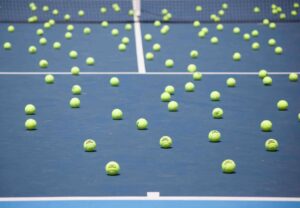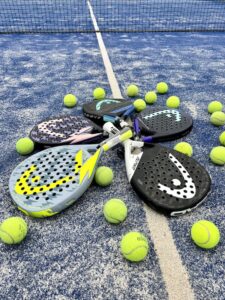Mastering the Art of Returning Serve in Padel: Positioning Techniques
3 min read
Mastering the Art of Returning Serve in Padel: Positioning Techniques
Introduction
Greetings, fellow padel enthusiasts! As a self-proclaimed padel expert, I am thrilled to share some insider tips on how to position yourself for a return of serve in padel. Mastering this art not only showcases your skills on the court but also ensures that you stay one step ahead of your opponents. So, let’s dive right in and discover the secrets to becoming a return of serve maestro!
The Importance of Positioning
Before we delve into the various techniques, let’s understand the significance of positioning in returning a serve. Padel is a fast-paced game, and a successful return of serve requires excellent anticipation and positioning. By placing yourself strategically, you gain a significant advantage over the server and increase your chances of hitting a quality shot.
Anticipation is Key
To optimize your positioning for a return of serve, it is crucial to anticipate the opponent’s shot direction. Observe their grip, body position, and racket preparation to get clues about their intended trajectory. As you gain experience, you will become more adept at predicting serves and positioning yourself accordingly.
The Classic Neutral Stance
The classic neutral stance is a tried and tested technique that allows for quick movement in any direction. Start with your feet shoulder-width apart, weight evenly distributed, and knees slightly bent. This position equips you to react swiftly to any type of serve while simultaneously providing stability.
Positioning for Serves Down the T-Line
When facing a serve directed down the T-line (along the center of the court), adjust your positioning accordingly. The aim is to position yourself close to the center mark on your side of the court. By adopting this spot, you maximize your coverage for both the forehand and backhand shots. Remember, agility is your friend!
Preparing for Cross-Court Serves
For cross-court serves, the emphasis shifts slightly. Take a step towards the side where the serve is intended to land. If your opponent serves to your right, move slightly to the right, and vice versa. This slight adjustment ensures that you have a better angle to return the ball with precision.
Adapting to High and Low Serves
It is worth noting that positioning can vary based on the height of the serve. When facing a high serve, step back a bit to provide yourself with the necessary space to execute a powerful overhead shot. Conversely, for low serves that hug the net, move forward, being mindful to maintain balance and not succumb to unnecessary rush.
Conclusion
There you have it, folks! By mastering the art of positioning yourself for a return of serve in padel, you unlock a crucial skill set that sets you apart on the court. Remember to continuously anticipate, adjust, and adapt to maximize your chances of nailing that perfect return.
Next time you step onto the padel court, visualize yourself as the maestro of positioning, gracefully returning serves with precision. Putting these techniques into practice will elevate your game and leave your opponents in awe. Now, go out there and conquer the court with your newfound expertise!







